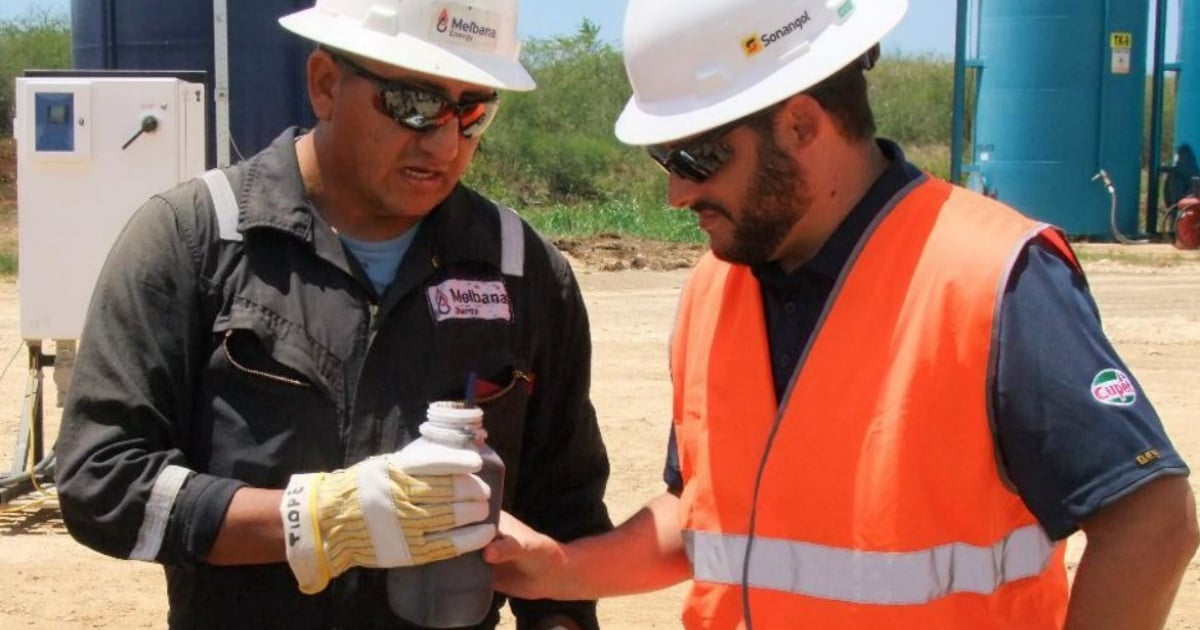The Cuban state media reported progress on Wednesday regarding oil exploration on the island by Australian company Melbana Energy. However, they failed to mention a critical detail that significantly alters the public's perception of this so-called good news. Operating under a risk exploration contract since 2015, Melbana has focused its efforts in Martí, a municipality in the province of Matanzas.
The official report highlights that Melbana has drilled four wells in the contract area, with particular emphasis on the Alameda-2 well, which began drilling in 2023 and is still under evaluation.
A Celebration of Oil Discovery
During operations at this well, a shallow reservoir containing oil with over 18° API was identified, marking a qualitative leap from the traditionally heavy crude extracted in Cuba's northern belt. Early in 2025, repair efforts at the same well achieved even higher quality production. The Union Cuba-Petroleum (CUPET) noted that this find "reinforces the potential of the deposit," although Melbana has opted to extend the evaluation period before making definitive commercialization decisions.
The next steps include drilling additional wells to confirm the productive layer's extent and assess its gas and oil potential. If results are confirmed, the company plans to issue a commercial declaration. Although Melbana's wells currently account for a mere 0.005% of national production, Cubadebate described the progress as "encouraging," underlining the future possibilities for Cuba's energy industry.
The Overlooked Fact: Oil for Export
However, the official narrative's optimism contrasts sharply with a glaring omission: the oil's ultimate destination. A note published on May 14 revealed that Melbana Energy plans to export the crude from the Alameda-2 well by late June, marking their first international shipment from Cuba.
According to this report, over 15,000 barrels of high-quality crude—lighter than Cuba's usual—have been stored, with necessary approvals secured for the operation. "Alameda-2 continues producing oil at a controlled rate since mid-April," Melbana stated, also updating on the advanced status of the Amistad-2 well, designed to maximize production in the Unit 1B formation.
Melbana Energy's CEO, Andrew Purcell, mentioned that "at the current production rate, they will have enough oil for the first test shipment next month." He also hinted that this exercise, along with the new well’s performance, will bring the company closer to securing funding for an ambitious field development plan, with a final decision expected by year's end.
Cuban Production, Foreign Destination
The technical process for this export involves primary separation of the crude on-site, followed by road transport roughly 50 kilometers to CUPET facilities for final processing and storage. This entire procedure is conducted with minimal personnel to keep operational costs low.
While Melbana has not disclosed the specific buyer of this Cuban crude, they confirmed that "the interested party is considering the timing and availability of an adequate coastal tanker or the possibility of combining the cargo with upcoming larger crude exports."
Simultaneously, the company plans to open two more wells in the same area, including one 850 meters southwest of Alameda-2. Access work has been completed, and all materials and permits are in place. Drilling, expected to last less than three weeks, will also target the Unit 1B formation, followed by testing and evaluation to determine its productive potential.
Unresolved Contradiction
While state media celebrates what they consider a new horizon for Cuba's energy self-sufficiency, the fact that the higher-quality crude will be exported has been conveniently omitted from official communication channels.
This omission is particularly significant given the country's energy context, characterized by frequent blackouts and a heavy reliance on imported oil, especially from countries like Russia or Venezuela. Although foreign investment could be crucial for sector development, the lack of transparency regarding the extracted resources' destination raises questions: To what extent will these discoveries directly benefit the Cuban people? What will be the real impact on the national energy crisis if the best results are destined for external markets?
The case of Melbana Energy and Alameda-2 oil highlights a gap between the official narrative and the real business strategy. While outlets like Cubadebate praise the technological advances and promise of energy self-sufficiency, they overlook a crucial fact: the immediate benefits of these discoveries will not remain in Cuba. It serves as a reminder of how informational control can shape public perception, even on sensitive issues like energy resources, emphasizing the importance of contrasting official stories with other sources for a complete picture of reality.
Key Questions on Cuban Oil Discoveries
What is the significance of the Alameda-2 well discovery in Cuba?
The Alameda-2 well discovery is significant because it identified a shallow reservoir with oil over 18° API, representing a qualitative improvement over the traditional heavy crude found in Cuba.
Why is the oil from Alameda-2 being exported?
The oil from Alameda-2 is being exported as part of Melbana Energy's business strategy, despite the initial narrative of contributing to Cuba's energy self-sufficiency. This decision highlights the commercial priorities of the company.
How does Melbana Energy plan to develop the oil field further?
Melbana Energy plans to drill additional wells to confirm the extent of the productive layer and assess its potential. They aim to secure funding for further development, with a final decision expected by year's end.
